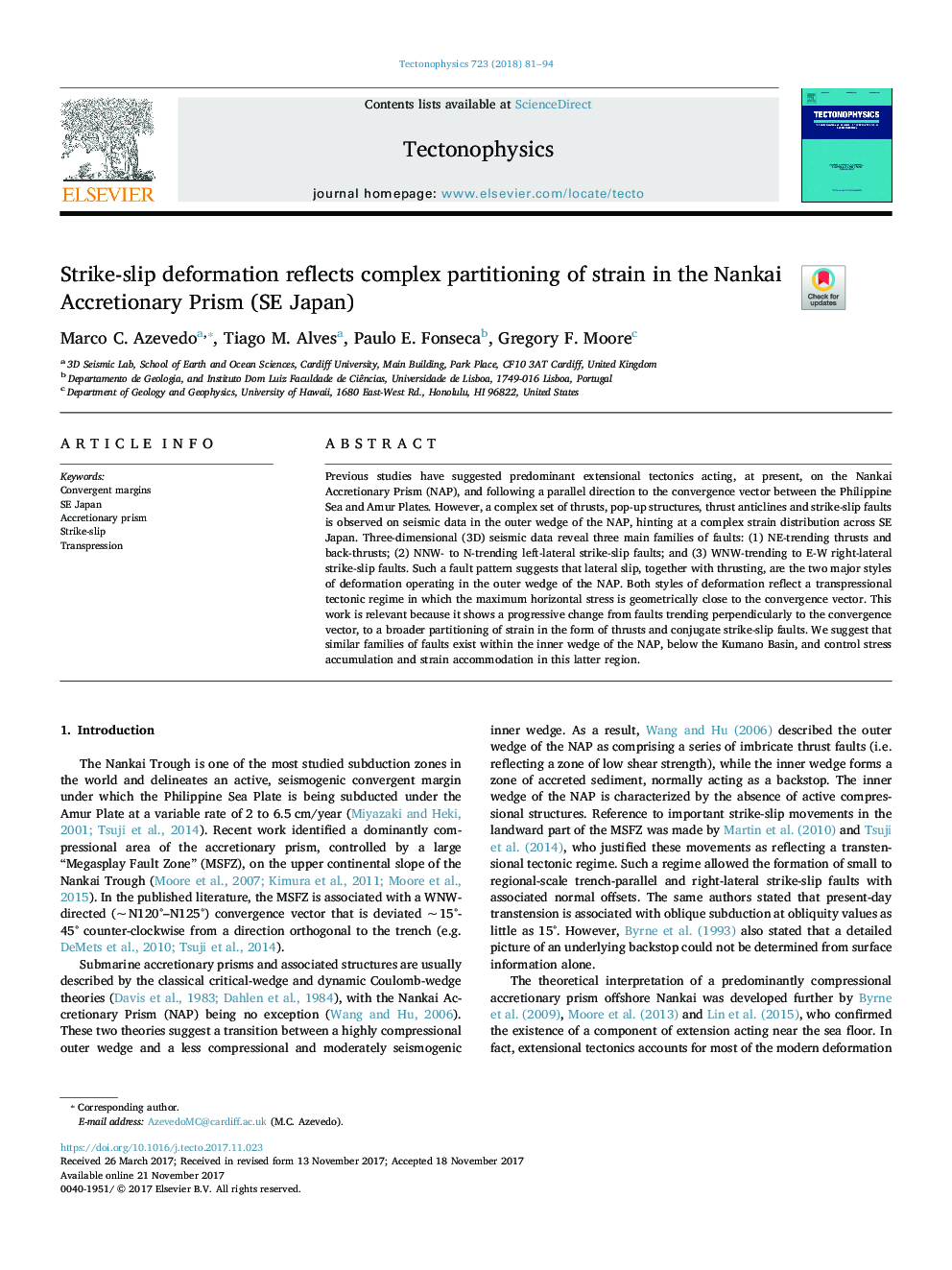| Article ID | Journal | Published Year | Pages | File Type |
|---|---|---|---|---|
| 8908783 | Tectonophysics | 2018 | 14 Pages |
Abstract
Previous studies have suggested predominant extensional tectonics acting, at present, on the Nankai Accretionary Prism (NAP), and following a parallel direction to the convergence vector between the Philippine Sea and Amur Plates. However, a complex set of thrusts, pop-up structures, thrust anticlines and strike-slip faults is observed on seismic data in the outer wedge of the NAP, hinting at a complex strain distribution across SE Japan. Three-dimensional (3D) seismic data reveal three main families of faults: (1) NE-trending thrusts and back-thrusts; (2) NNW- to N-trending left-lateral strike-slip faults; and (3) WNW-trending to E-W right-lateral strike-slip faults. Such a fault pattern suggests that lateral slip, together with thrusting, are the two major styles of deformation operating in the outer wedge of the NAP. Both styles of deformation reflect a transpressional tectonic regime in which the maximum horizontal stress is geometrically close to the convergence vector. This work is relevant because it shows a progressive change from faults trending perpendicularly to the convergence vector, to a broader partitioning of strain in the form of thrusts and conjugate strike-slip faults. We suggest that similar families of faults exist within the inner wedge of the NAP, below the Kumano Basin, and control stress accumulation and strain accommodation in this latter region.
Related Topics
Physical Sciences and Engineering
Earth and Planetary Sciences
Earth-Surface Processes
Authors
Marco C. Azevedo, Tiago M. Alves, Paulo E. Fonseca, Gregory F. Moore,
